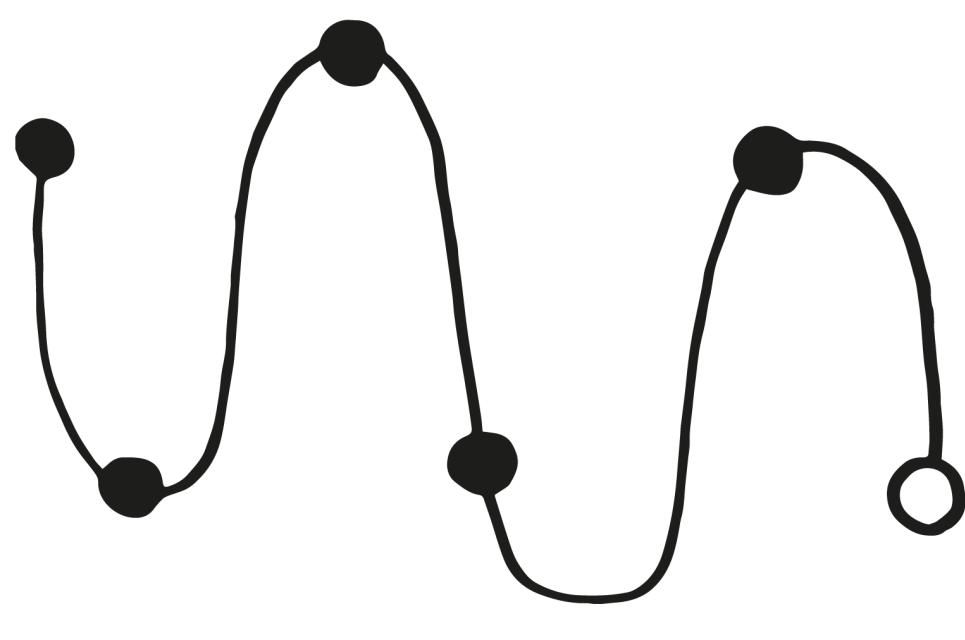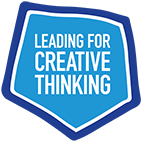Leading for Creativity – Waving Not Drowning
Naomi Lord is Director of Creative Learning and Partnerships for the Bolton School Foundation, Greater Manchester.
Bolton School is currently implementing a programme to establish creative learning pathways from EYFS to Sixth Form, integrating curricular, co-curricular, and community-based activities to provide a comprehensive and expansive education.
‘Go a little bit out of your depth and when you don’t feel your feet are quite touching the bottom, you’re just about in the right place to do something exciting.’ — David Bowie
How might educational leaders balance the need for quick wins with a commitment to long-term, systemic change that embraces creativity and adaptability?
Don’t Drop a Rock into a Puddle
Learner agency evolves through the application of critical thinking, practical skills, including digital proficiency, and adaptive thinking to address contemporary challenges, encapsulated as creative competencies.
However, throwing pedagogical armbands labelled ‘creativity’ into the business-as-usual-pond is not a solution. We must acknowledge that the shape of educative waters is changing, and approaches to professional learning, management of learning, modes of assessment, and schools’ relationships must change too.
It is essential to pause, acknowledge the restrictive shape and shallows of the current puddle, step out of it, and then explore how we might embark on something greater together with collective confidence and purpose.
How might we create a process of aspirational educative change together?
- Reinvigorate conversations about the purposes of education.
- Create the space for ideation, discovery and design by colleagues and learners.
- Shift from top-down control curriculums to collaborative learning design and journeys for colleagues and students.
- Employ multi-modal skills application and evidencing processes. You can mitigate tradition modes of learning and new innovations this way.
- Blend classroom learning with civic opportunities. Schools’ relationships with their locality offer the opportunity to promote learner self-efficacy in active citizenship.
Vision: The Shape of Water
Stepping out of the puddle is imperative, as is recollecting what it was like to learn to swim for the first time. How might we learn to swim in deeper waters again, and why are we striking out towards them?
1. Define and Redefine Purpose – What Purpose Education?
Some important questions:
- What are we trying to float? Without a shared vision of the water's shape, navigation is challenging and leaves those sailing with us at sea.
- Do our methods prioritise validity or efficiency? Do we value the relevance of learning or the reliability of test results?
- Is our focus on ticking correct answers or the problem-solving approaches used?
- Are our methods agile and adaptive to changing circumstances?
We can choose both and consider the continuum of positions in between.
Read what Andreas Schleicher has to say on the shape of future assessment here: https://royalsociety.org/blog/2022/06/envision-andreas-schleicher/.
2. Define Creativity and Explore its Applications
- Establish a common language for creativity and identify conditions fostering its growth.
- Foreground creative competencies in split-screen learning, champion adaptability via open-ended project-based learning, cultivate a beginner's mindset, and embrace mistakes as accelerators of learning.
- Recognise that discovery and problem-solving are integral across all disciplines.
- Find a field guide to teaching and assessing creativity here: https://www.researchgate.net/publication/359314332_A_field_guide_to_assessing_creative_thinking_in_schools.

Provide Buoyancy by Demonstrating Vulnerable Leadership
1. Informed Leadership
- Educational leaders and teachers require an invigoration of skills to navigate uncertainty, think innovatively, and inspire a vision beyond standardised testing goals.
- Know the waters. Be involved in networks of professional learning to maintain currency of purpose and action. Consult with experts.
- Leaders must embody enthusiasm for the journey. Zest as a lead learner can be found in learning new skills, connecting and giving to others and being a present and active support in others’ learning.
2. Generous, Vulnerable, and Collaborative Leadership
- Let’s practice what we preach. Creative learning can only occur if school leaders and classroom teachers adopt the modes of creative practices themselves as they navigate curriculum design. A strategy is only meaningful if understood and embraced; otherwise, it's just rhetoric.
- To shape a strategy, the conversation must be connected to the front line of the classroom. Create a design dialogue with the classroom to implement and refine practices from the ground up.
- Explore ‘Creative Thinking in Schools: A Leadership Playbook’: https://leadingforcreativethinking.org/buy-playbook.
For a transformative shift from the conventional model of teaching, collaborative co-design of learning processes is crucial. This mode engages well-designed professional learning that empowers teachers to adapt their practice within the unique context of their setting.
Transparency in leaders' creative development experiences – sharing struggles, the process of persistence, enjoyment, and achievements – positions them as continuous learners. This parallels the teacher's role as a lead learner within the classroom. As leading teachers, let’s afford our colleagues the same role models and supportive encouragement as we do our children and young people.
Turn and Face the Strange Together
1. Share a Visible Theory of Change
- Determine a clearly articulated why together – what is our shared vision and its purposes?
- Where are the bright spots of talent and enthusiasm? Who needs support?
- What are the developmental phases of this?
- What are the projected outcomes for all members of the school community and why are they important?
2. Wisdom Sails with Wind and Time
How might we establish a system of learning that adapts as a setting’s community practice develops, the educational landscape shifts and the world changes?
- Avoiding a top-down command and control curriculum does not just honour the integrity of all the stakeholders in an educative process, it also creates the space required to hot-house adaptive creativity.
Laura Bain of the Hasso Plattner Institute of Design at Stanford and Co-Director of K12 Lab presents this matrix to chart quick wins alongside long term growth.

- Here is one example of how we might organise whole-setting development for creativity in learning with quick wins and slow burn approaches: https://rethinkingassessment.com/rethinking-blogs/rethinking-assessment-a-holistic-creative-thinking-journey-from-ks1-5/.
3. Balancing Action and Vision
Quick wins serve as valuable stepping stones in experimental classroom practice, fostering a shared sense of change in motion.
- A roadmap solely comprised of concrete actions risks devolving into a paint-by-numbers approach.
- Risk-based learning is generated by those who are afforded co-creative development space and, in turn, instigates a deeply positive long-term shift in organisational culture.
As Hilary Cremin put it at the November 2023 GIoCT Creativity in Education Summit: ‘We can’t work towards a better world until we can imagine it. Monoculture, working to an idea of fixed and fits all solutions, is making us sick.’
Reflecting Together
- How might your leadership approach align immediate successes with a broader vision for transformative, creative education in the long run?
- What steps can you take to demonstrate vulnerable leadership by incorporating creative practices in your role as an educational leader?
- In fostering a shared vision for aspirational change, how would you initiate conversations about the purpose of education within your school community?
- In shaping a vision for creative education, how can you actively involve diverse stakeholders to ensure a broad and inclusive perspective?
